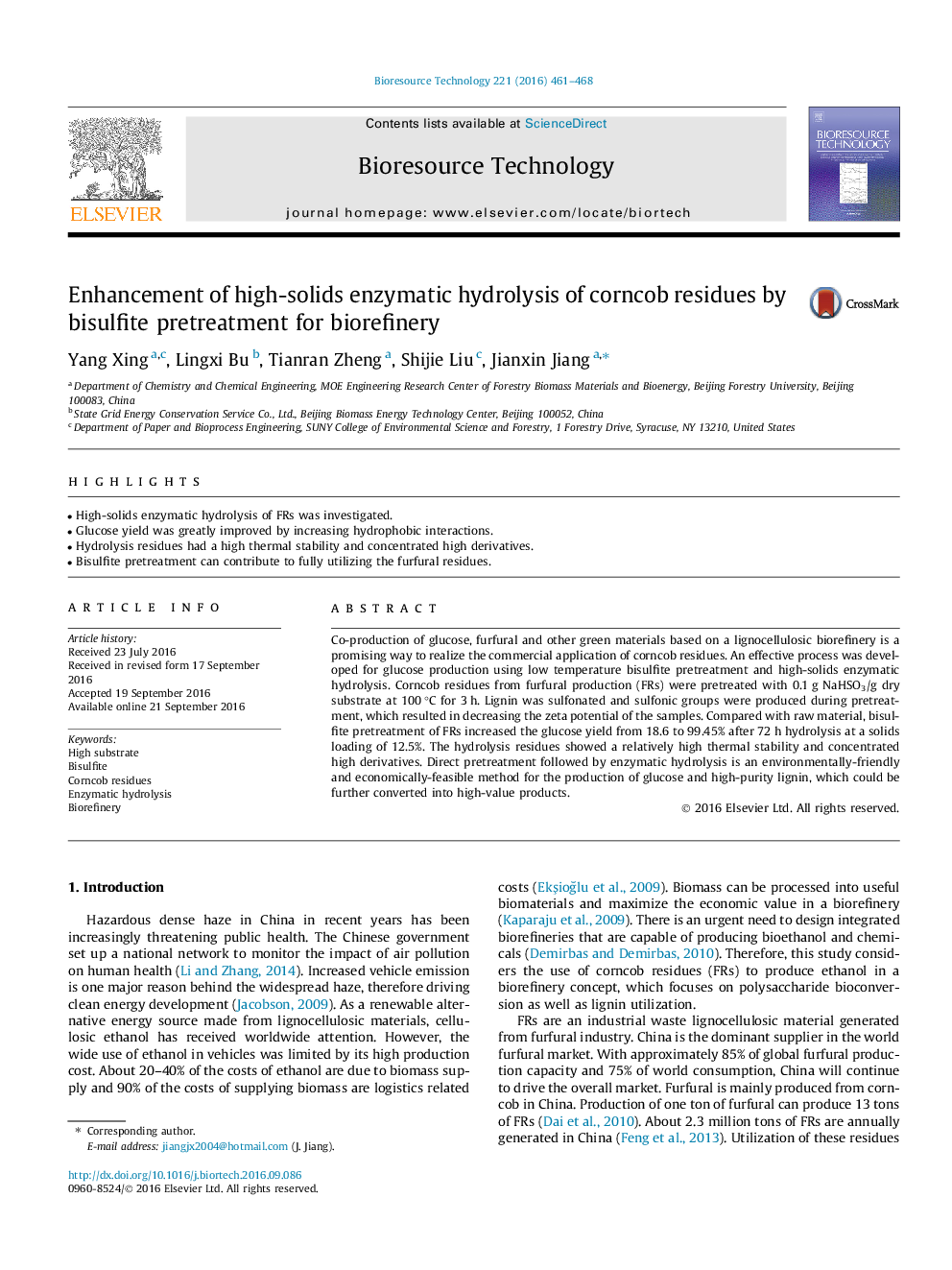| Article ID | Journal | Published Year | Pages | File Type |
|---|---|---|---|---|
| 4998077 | Bioresource Technology | 2016 | 8 Pages |
â¢High-solids enzymatic hydrolysis of FRs was investigated.â¢Glucose yield was greatly improved by increasing hydrophobic interactions.â¢Hydrolysis residues had a high thermal stability and concentrated high derivatives.â¢Bisulfite pretreatment can contribute to fully utilizing the furfural residues.
Co-production of glucose, furfural and other green materials based on a lignocellulosic biorefinery is a promising way to realize the commercial application of corncob residues. An effective process was developed for glucose production using low temperature bisulfite pretreatment and high-solids enzymatic hydrolysis. Corncob residues from furfural production (FRs) were pretreated with 0.1 g NaHSO3/g dry substrate at 100 °C for 3 h. Lignin was sulfonated and sulfonic groups were produced during pretreatment, which resulted in decreasing the zeta potential of the samples. Compared with raw material, bisulfite pretreatment of FRs increased the glucose yield from 18.6 to 99.45% after 72 h hydrolysis at a solids loading of 12.5%. The hydrolysis residues showed a relatively high thermal stability and concentrated high derivatives. Direct pretreatment followed by enzymatic hydrolysis is an environmentally-friendly and economically-feasible method for the production of glucose and high-purity lignin, which could be further converted into high-value products.
